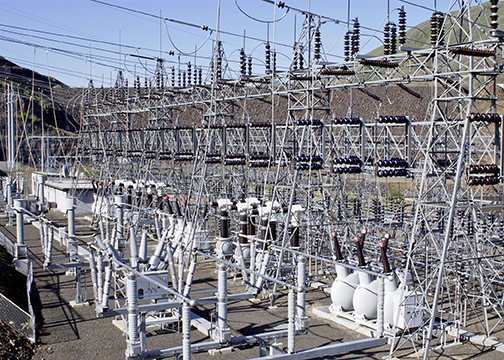Plans have been devised to undertake 46 power projects worth $61 million to meet Tehran Province's peak demand in summer starting from June 21, 2016, said the managing director of Tehran Regional Electricity Company.
Gholamreza Khoshkholq added that implementing transmission and distribution substation projects, as well as extending aerial and ground transmission cables, top the company's priority list as Tehran's power grid has already been proved to be dilapidated, IRNA reported.
According to Khoshkholq, the company provides services to more than 8 million subscribers in Tehran, Alborz and Qom provinces.
"Of the 46 projects, 23 have already been implemented and connected to the national electricity network and the rest is being developed," he said.
The official noted that based on projections, the electricity load during summers days with temperatures of 39, 40, 41, 42 degrees centigrade will stand at 9350, 9372, 9409 and 9477 megawatts respectively.
"Plans call for attracting potential investments and relying on the private sector as a major player in power projects' development via offering incentive packages," he said.
The electricity system in Iran, including production, transmission and distribution, is centralized and owned by the government. The private sector is of the opinion that producing and supplying electricity in Iran are not a very attractive venture due largely to the low prices.
Asked about the growth of electricity consumption in Tehran, Khoshkholq said statistics indicate an 8% rise in consumption in previous years, though consumption grew less than 1% last year.
Khoshkholq believes that last year's marginal growth can be attributed to two reasons, the first of which was transferring industries' peak demand hours to non-peak periods and the economic recession that overshadowed the whole industrial sector.
Underscoring the fact that 9,700 MW of electricity will be produced to meet Tehran's peak demand, he noted that the production capacity can increase by 10,000 MW if the temperature goes up.
Comparing electricity peak demand in 2014 and 2015 during daytime and at night, he said, "Electricity consumption peaked at 8,989 MW in 2015 in daytime, showing a 3% rise compared to that of 2014. Nonetheless, it showed a -0.6% decline and peaked at 8,331 MW at night."
Khoshkholq further said making payment to the Targeted Subsidies Organization has been a big burden on the ministry's shoulder, because of which the ministry is in the red.
The annual electricity sale is estimated to be around $4 billion, $1 billion of which have been paid to the Targeted Subsidies Organization since 2010 to be paid to the people as part of Iran's energy subsidy reform.
Although the Cabinet exempted the Energy Ministry from paying to the Targeted Subsidies Organization as of the beginning of the new Iranian year (started March 20, 2016), the official said the ministry is still paying to the organization.
The Subsidy Reform Plan, launched in 2010 by former president Mahmoud Ahmadinejad, removed heavy subsidies on food and energy, and instead paid 450,000 rials ($13) to each Iranian on a monthly basis.
On the electricity sector's achievements, Khoshkholq said the industry does not need to rely on foreigners' help in building distribution substations, yet 3% of the transmission substations high-tech equipment must be imported.
Iran’s electricity industry ranks 14th in the world and first in the Middle East in terms of electricity generation. It is the largest exporter and importer of electricity in the Middle East and exports electricity to Armenia, Pakistan, Turkey, Iraq and Afghanistan.
Azerbaijan and Armenia supply electricity to Iran under a swap agreement. Iran’s electricity industry ranks 14th in the world and first in the Middle East in terms of electricity generation with an installed power generation capacity of 74,000 MW.


